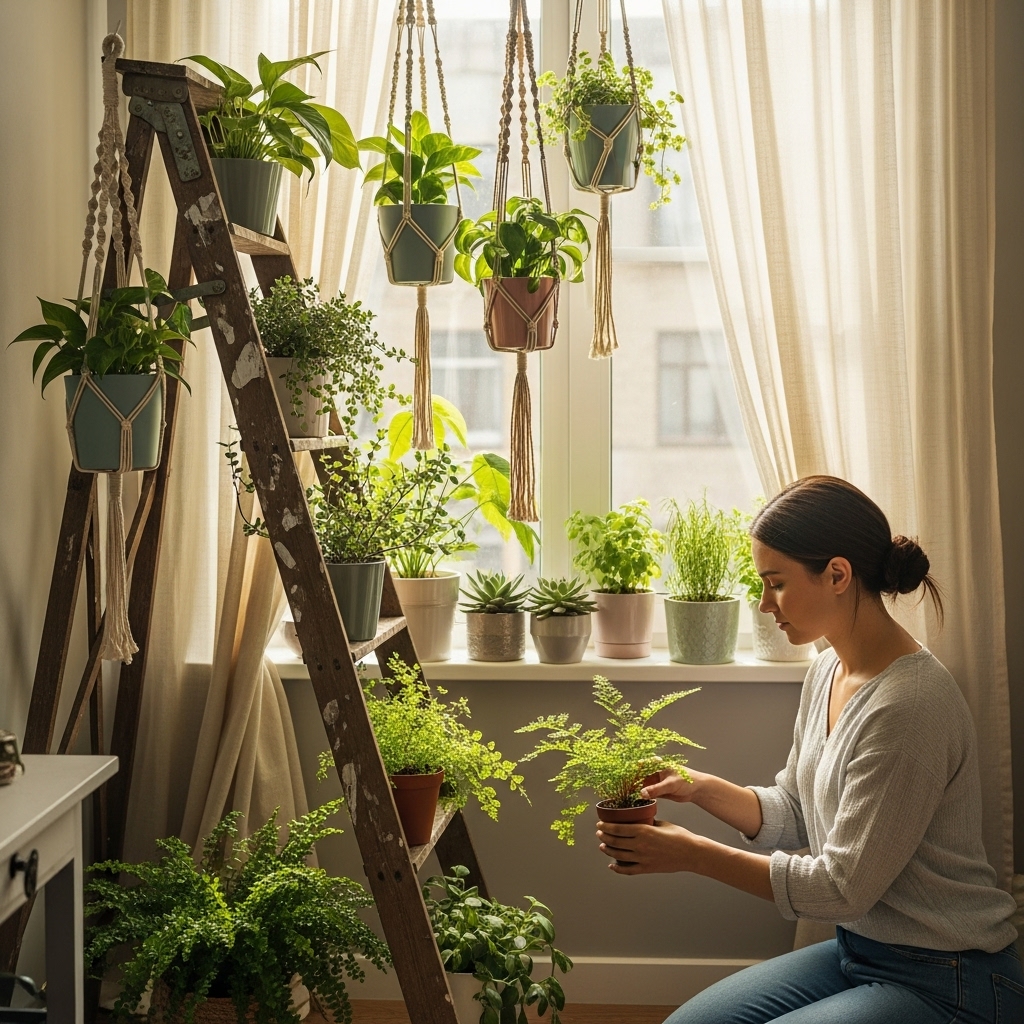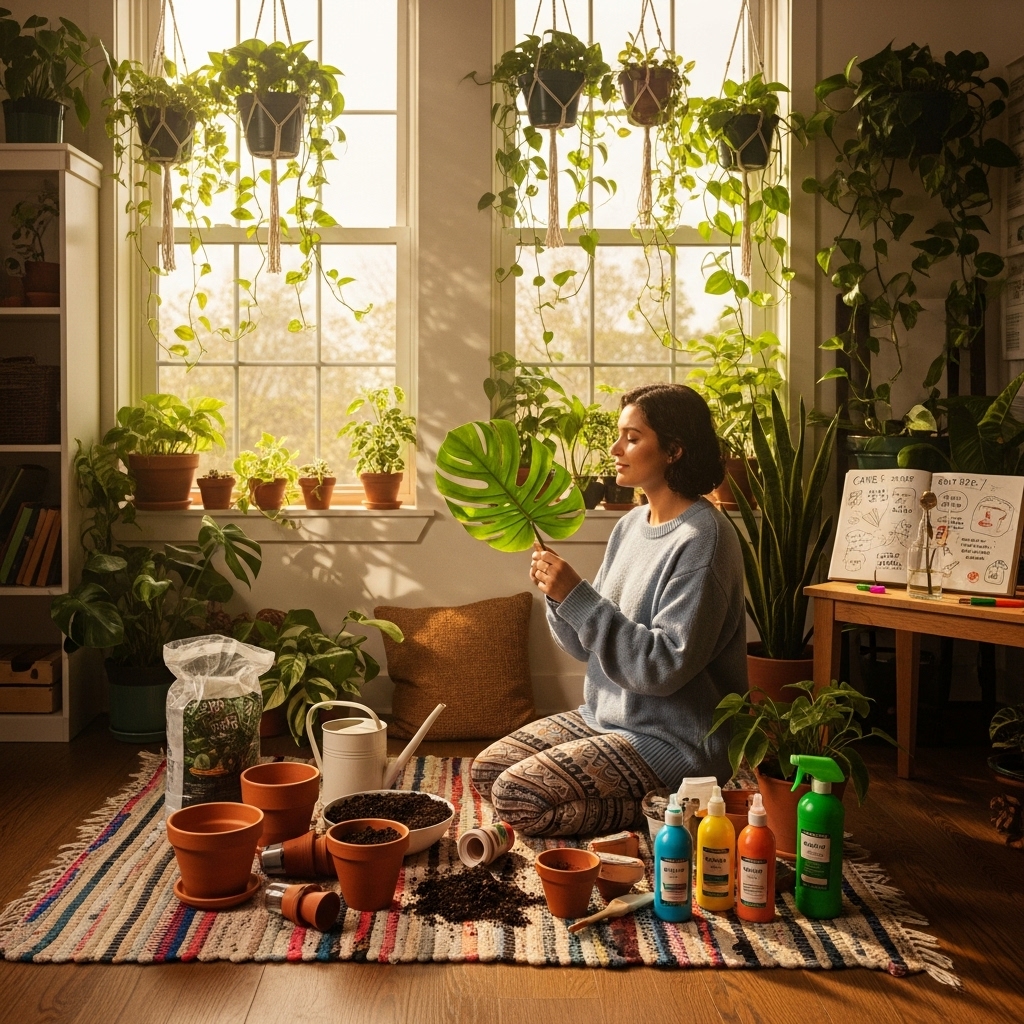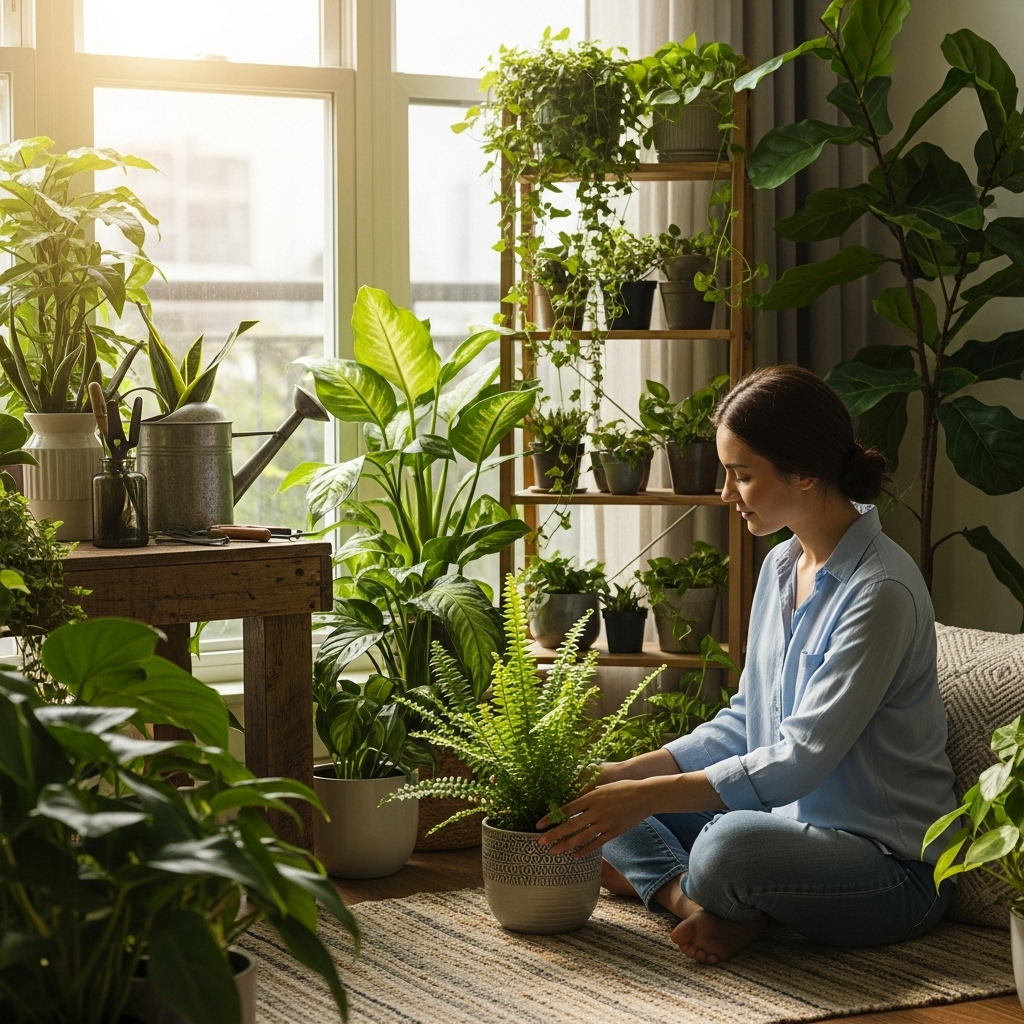Creating an indoor garden in a small space can transform your living area into a vibrant oasis. Whether you’re a seasoned gardener or just starting, I’ve gathered the essential supplies to help you cultivate your green thumb, even in tight quarters.
Choosing the Right Plants for Small Spaces

When I first decided to start my indoor garden, the abundance of plant options was both exciting and overwhelming. I quickly learned that not all plants thrive in confined spaces, so I needed to choose wisely. Opting for the right plants is crucial; it sets the foundation for a successful indoor garden that can flourish regardless of size.
1. Consider Your Space and Light Conditions
The first step in selecting plants is evaluating the amount of light your space receives. I found that observing light patterns throughout the day helped me understand which spots were best for my plants. South-facing windows generally provide the most sunlight, making them ideal for sun-loving plants. On the other hand, if your space receives limited light, consider plants that thrive in low-light conditions.
Some of my personal favorite low-light plants include:
- Snake Plant: This hardy plant is known for its air-purifying qualities and can tolerate neglect.
- ZZ Plant: Its glossy leaves and ability to thrive in low light make it a staple in my collection.
- Pothos: This trailing vine is not only beautiful but also very forgiving when it comes to care.
If you’re lucky enough to have a well-lit area, consider incorporating:
- Succulents: These drought-resistant plants come in various shapes and sizes, making them perfect for small spaces.
- Herbs: Basil, rosemary, and mint can provide fresh flavors for cooking while thriving in sunny spots.
- Fiddle Leaf Fig: A popular choice for adding a bold statement to any room, it requires bright, indirect light.
2. Selecting Suitable Containers
Once I narrowed down my plant options, I realized that choosing the right containers is just as important as the plants themselves. Containers not only house your plants but also contribute to the overall aesthetics of your indoor garden.
When selecting containers, consider the following:
- Size: The container should be proportional to the plant’s size. A pot that is too small can restrict root growth, while a pot that is too large can lead to overwatering issues. I recommend starting with pots that are just a few inches larger than the plant’s root ball.
- Material: Clay pots are breathable and help prevent overwatering, while plastic pots are lightweight and versatile. Metal and ceramic containers can add a touch of style but may require additional drainage options.
- Drainage: Always ensure your containers have drainage holes. I learned the hard way that a lack of drainage can lead to root rot and ultimately, the demise of my plants. If you fall in love with a pot that doesn’t have drainage, consider using it as a decorative cover for a plastic pot.
3. Essential Soil and Fertilizers
A common mistake I made when starting my indoor garden was overlooking the importance of soil. The right soil mix can make a significant difference in plant health. I found that using a high-quality potting mix catered to my plants’ specific needs was essential.
For most houseplants, a well-draining potting mix is ideal. If you’re growing succulents or cacti, look for a specialized mix that allows for proper drainage. I also discovered that adding perlite or vermiculite can enhance drainage and aeration in the soil.
Fertilization is another aspect I learned to prioritize. While my plants may not require as much fertilizer as outdoor gardens, they still benefit from regular feeding. I typically use a balanced, water-soluble fertilizer every few weeks during the growing season. Just remember, it’s better to under-fertilize than over-fertilize, as too many nutrients can harm your plants.
4. Tools for Success
No indoor gardening setup would be complete without the right tools. I found that having a few essential supplies on hand made the gardening process much smoother:
- Watering Can: A small, lightweight watering can with a long spout allows for precise watering, preventing over-saturation.
- Pruning Shears: These are invaluable for keeping plants healthy by removing dead or diseased leaves.
- Plant Mister: I love using a mister for plants that thrive in humid conditions, such as ferns.
- Soil Moisture Meter: This handy tool helps me gauge when to water, ensuring I avoid the pitfalls of overwatering.
As I learned more about indoor gardening, I discovered that a little preparation and the right supplies can lead to a flourishing urban jungle, no matter how small the space. It’s about making thoughtful choices that align with both my lifestyle and the environment I want to create. With these essentials in place, I’m excited to continue my journey into the world of indoor gardening, and I can’t wait to share more tips and experiences on this green adventure!
Creating a Care Routine

As I dove deeper into indoor gardening, I quickly realized that having a reliable care routine was paramount to my plants’ well-being. It’s one thing to set up your garden with beautiful plants and stylish pots, but keeping them healthy and thriving requires consistent attention and care. I’ve developed a simple routine that has helped me stay organized and ensure my plants are getting what they need.
1. Watering Schedule
Watering can be tricky, and I learned that each plant has its own preferences. To avoid over or under-watering, I set a schedule based on plant types and their individual needs. For instance, my succulents thrive on a less frequent watering schedule compared to my leafy ferns, which like to be kept consistently moist. I typically check the soil moisture every week, but I adjust this frequency based on the season. In the warmer months, I tend to water more often, while in the cooler months, I cut back.
Using a soil moisture meter has made this process much easier for me. It allows me to accurately gauge when it’s time to water, ensuring I don’t make the mistake of guessing. I also keep a journal to track watering dates, which helps me stay consistent and attentive to each plant’s needs.
2. Light Adjustments
As I learned about my plants, I discovered that their light needs can change over time. I often reposition my plants based on the seasons. During the winter months, for example, the sun tends to be lower in the sky, so I move my plants closer to the windows for maximum light exposure. Conversely, in summer, I might need to shift them slightly away from direct sunlight to prevent scorching.
I also rotate my pots every few weeks to ensure all sides of the plants receive equal light. This simple act encourages even growth and keeps my plants looking full and vibrant.
3. Fertilizing Routine
Fertilizing is another key component of my care routine. I’ve found that most of my plants benefit from fertilizing every 4-6 weeks during the growing season, typically spring through summer. I use a diluted, balanced liquid fertilizer, following the recommended amounts on the packaging to avoid over-fertilization. I’ve learned that it’s much better to err on the side of caution when it comes to feeding.
In the fall and winter, I reduce the frequency as many of my plants enter a dormant phase. This adjustment helps prevent nutrient buildup in the soil, which can lead to issues like root burn.
4. Regular Maintenance
Regular maintenance has been essential in keeping my indoor garden thriving. I set aside time every month to inspect each plant. I look for signs of pests, yellowing leaves, or any other abnormalities. If I spot any issues, I address them immediately. I’ve found that early detection is critical in preventing larger problems down the line.
Additionally, I prune my plants regularly to encourage bushier growth and to remove any dead or damaged leaves. This not only keeps my plants looking tidy but also allows them to redirect their energy toward new growth. Using sharp pruning shears, I carefully trim the leaves, taking care not to cut back too much at once.
5. Creating a Hygienic Space
Maintaining a clean environment for my indoor garden is something I’ve come to prioritize. I make it a habit to wipe down the leaves of my plants to remove dust and allow for better photosynthesis. I also clean the surrounding area to keep it free from debris or fallen leaves that could attract pests.
Occasionally, I take my pots outside for a good wash to remove any buildup of salts or minerals that can accumulate over time. This simple act not only keeps my pots looking fresh but also extends their lifespan.
Expanding My Indoor Garden

As my confidence in indoor gardening grew, so did my desire to expand my collection. I started exploring different plant types and experimenting with propagation. I’ve had great success with propagating pothos and spider plants by simply taking cuttings and placing them in water until they develop roots. It’s been incredibly rewarding to see the new plants flourish in their own pots.
I’ve also begun to experiment with vertical gardening. Utilizing wall-mounted planters or shelves has allowed me to maximize my space while adding visual interest to my indoor garden. I love the idea of creating layers of greenery in my living space, which not only looks beautiful but also enhances air quality.
Additionally, I’ve started to forage for unique plant varieties at local nurseries and plant swaps. Engaging with other plant enthusiasts in my community has opened up a world of possibilities. Not only have I discovered rare plants, but I’ve also exchanged tips and stories that have enriched my gardening journey.
As I continue to learn and grow in my indoor gardening adventure, I’m excited to see what lies ahead. There’s an undeniable joy that comes from nurturing plants and watching them thrive, and I can’t wait to share more experiences and tips as I delve deeper into this green world!
Final Thoughts
Indoor gardening has truly transformed my living space and enriched my life. With the right care routine, a bit of experimentation, and a willingness to learn, I’ve been able to create a thriving indoor garden that brings me joy every day. I hope my experiences inspire you to embark on your own indoor gardening journey, no matter how small your space may be.
